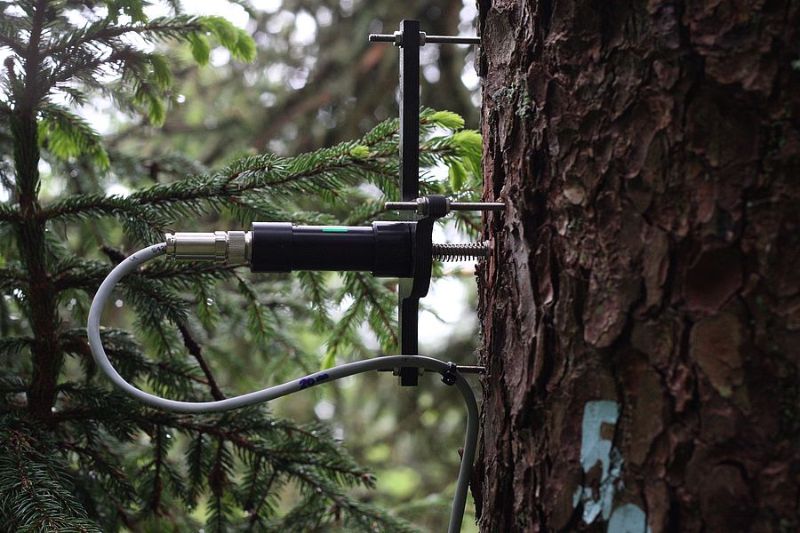Why trees grow at night
Trees form new cells by using the carbohydrates they produce through photosynthesis. However, it is not primarily the availability of carbohydrates that limits growth, but the water tension in the tree, the so-called water potential, as this study recently published in the journal New Phytologist shows.
The international research team led by Roman Zweifel at the Swiss Federal Institute for Forest, Snow and Landscape Research WSL has come to the surprising conclusion that trees grow primarily at night, and that this trend is largely explained by the level of air dryness. In the world’s first comprehensive study of radial stem growth with an hourly data resolution, the scientists analyzed data recorded over up to 8 years on 170 trees of 7 common species located at 50 sites all over Switzerland (> 60 Mio data points). Researchers from ETH Zurich and other research institutions in Switzerland and Europe were involved in the study. The sites investigated are part of TreeNet, a network in which stem radius changes of trees have been measured continuously using high-precision point dendrometers in parallel with information about the dryness of air (vapor pressure deficit, VPD) and soil (soil water potential) in Swiss forests since 2011.
The data show that the probability of tree growth varies significantly over the 24 hours of a day: stems shrink under the effect of water stress and expand in a range of 1-200 µm per day, and these fluctuations are superimposed on growth rates of 1-5 µm per hour.
Air humidity is key to tree growth
The research team concluded that VPD plays a key role as it allows for growth mainly at nighttime. In their study, during day time, high VPD severely limited radial stem growth and allowed only little growth, except in the early morning. „The biggest surprise to us was that trees grew even under moderately dry soil conditions when the air was humid enough. Conversely, growth remained very low when the soil was moist but the air was dry,“ recalls Roman Zweifel, lead author at WSL. The reason for this is the limited water transport capacity of the trees: as soon as the air becomes drier, trees temporarily lose more water through transpiration than they absorb through their roots. The entire tree comes under tension, its water potential decreases, and growth stops regardless of the availability of carbohydrates.
Stem growth is more sensitive to air dryness than photosynthesis
In addition, the authors found that the level of air dryness that strongly reduces stem growth is significantly lower than that known to close the tree's stomata and thus to stop photosynthesis. “In other words, trees stop growing before photosynthesis is inhibited”, summarizes Roman Zweifel. This could explain, for example, why trees in dry environments appear to store carbohydrates but hardly grow anymore.
While current climate-sensitive forest growth models are based on knowledge about annual or monthly averages, the high-resolution scale of this study shows that trees only grow during a narrow time window of a few hours within the 24-hour period and consequently only during a limited time throughout the growing season. As carbon gain (photosynthesis during the day) and carbon consumption (growth during the night) are temporally decoupled, their sensitivity to climatic factors differs between day and night. These findings may change the way we look at the impact of climate change on forests, in particular for predicting the carbon sink of forests.
